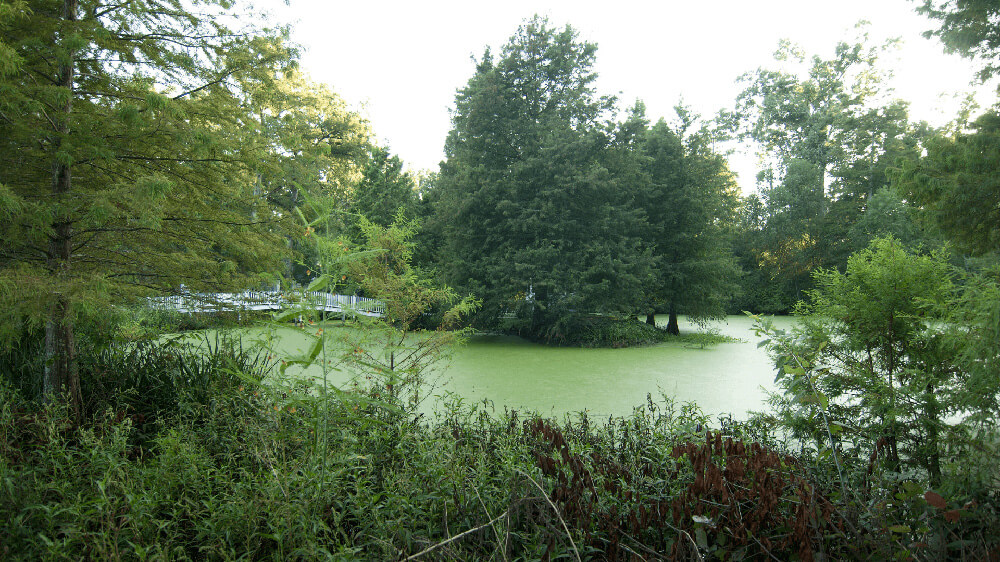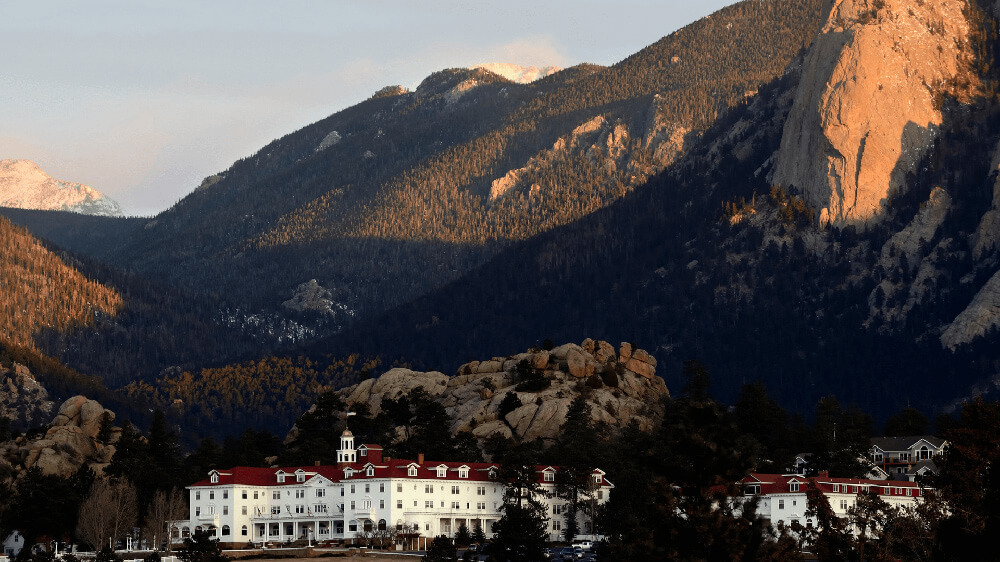Updated October 4, 2024; Originally posted on October 13, 2023
There are many things that must be disclosed when buying or selling a home. While this list includes numerous items, revealing whether a building qualifies as haunted is not required. Unless, of course, a homeowner has publicly made that claim.
On this Friday the 13th, the CoreLogic content team explores abandoned mansions, luxurious hotels, former speakeasies, and famous cinematic locales that are haunted sites in America associated with paranormal activity and general creepiness. Some places are scary looking while others are haunted homes that have repeatedly been some of the scariest homes for sale in the country, but they are all cultural touchstones in one way or another.
Everyone has their opinion on places that creep them out, but here’s our take on locations and buildings that could (or should) be haunted places in the U.S.
1. The Queen Mary
Long Beach, California
When one of the world’s most luxurious ocean liners was converted into a hotel, its transformation was superficial. Even decades later, the spirit of the Queen Mary remains connected to its history.
With 200 original first-class staterooms and suites interspersed among the 80,000 square feet of salons designed in Art Deco splendor, the Queen Mary is as majestic today as it was on its maiden voyage in 1936. However, amid its sumptuous surroundings lurk the spirits of years gone by. With a reported 49 people deceased aboard — the ship was pressed into military service during World War II — there have been ample ghost stories in the decades since its decommission.
Although the floating hotel is known to be one of the most haunted in the nation, not all rooms are created equal. Stateroom B340 is one of the spookiest. For years it was closed to guests, but today the room is open and available for those looking for a unique experience. While there, make sure to pass by the Mauretania Room, the Mayfair Room, and the first-class swimming pool for a chance to commune with the other side.

2. Hill House
Mineral Wells, Texas
According to CoreLogic data, this home, which is located in a small Texas town, is valued at $108,080.
When Texas was the Wild West, many towns ran bootleggers, prostitutes, and gambling houses. Hill House was very much a part of that history, but what makes this 1880 structure notable was its association with discretion and the lack of departure of many visitors.
In a town that was known for its healing, mineral-rich wells, Hill House gained a reputation for being rather unhealthy. The 3,800 square foot Victorian mansion has five bedrooms and four bathrooms, and its grounds are rumored to a former hideout of Native Americans, the location of the Sam Bass gold, and a haven for paranormal activity. Today this building is frequented by paranormal investigators looking to experience one of the most haunted places in Texas.
3. Edgar Allan Poe House
Baltimore, Maryland
According to CoreLogic data, this national landmark near the center of the city is worth $55,200.
Master of the macabre Edgar Allan Poe lived in numerous East Coast cities in his 40 short years, but the tale ultimately ended in Baltimore in October 1849, under fittingly mysterious circumstances.
Before his untimely demise, Poe spent time during the 1830s living in a West Baltimore home on N. Amity Street. Now a National Historic Landmark, the small brick home is just one the many places in the city associated with the legendary writer (including a pub in the Fells Point neighborhood, reportedly one of the last spots Poe was seen alive.)
Poe’s final resting place, on the grounds of Baltimore’s Gothic Westminster Hall, is located less than a mile from the historic home where he likely penned some of his legendary work. For years, an unknown visitor (or perhaps multiple visitors) known as the “Poe Toaster” left roses, notes and liquor bottles at Poe’s grave on his January birthday, a tradition that has since reportedly ended and remains as eerie as the author and his work.
4. The Sallie House
Atchison, Kansas
Those who are interested in hauntings have likely heard of the Sallie House. This unassuming Heartland home has a history that makes a vist feel like anything but a heartfelt welcome to the area. The structure’s modest curb appeal belies a site filled with tragedy
Built between 1867 and 1871 by Michael C. Finnie, this house was quiet for over a century until 1993 when two renters began noticing unexplained activity. Local lore attributed the disturbances to a spirt named Sallie who was brought to the home, which at the time belonged to a doctor, for an emergency appendectomy. Unfortunately, she did not survive, and her traumatic passing is said to be the origin of the haunting that remains in the house to this day.
Since those renters left the home in the early 90s, it has remained unoccupied and serves as a tourist destination.

5. Franklin Castle (Hannes Tiedemann House)
Cleveland, Ohio
The legend of Franklin Castle dates back to the 1880s. Built by Hans Tiedemann, a successful banker and co-founder of Union Banking & Savings Co., the dark, Victorian family home was the scene of tragedy early on.
Just after the Tiedemanns moved into the home, the couple’s first daughter, Emma, succumbed to diabetes. She was shortly followed by her grandmother and three more siblings. However, stories of paranormal activity in the 20-room mansion didn’t begin to surface until the mid-20th century, following its function as a meeting place for the German Socialist Party and later a residence for Nazis.
After World War II, the home remained vacant until 1968, when it was purchased by the Romano family. At that point, strange things began to transpire, including stories of phantom organ music playing, lights flickering and even the discovery of human remains in one of the hidden rooms.
6. Hotel Chelsea
New York, New York
New York is the city that never sleeps, making it an ideal playground for those seeking a long night in the company of ghosts.
Hotel Chelsea in Manhattan has become infamous for its long history of artistic crises and stories of dramatic demise. The hotel was originally constructed in the late 19th century as a utopian co-op residence, designed to promote self-sufficiency and the arts. Although initially successful, the concept and the building fell into disrepair in the early 20th century following several mortal incidents where the outcome resulted in the former guests staying behind — for generations.
7. LaLaurie Mansion
New Orleans, Louisiana
It isn’t surprising that one of the most unnerving houses in the U.S. one of the country’s most famous haunted houses would be in New Orleans, long considered to be a haunted town.
What is surprising, though, is the agonizing history of this house that led to its acclaimed status. Located in the French Quarter, the multistory, neoclassical home originally belonged to Madame Delphine LaLauire, a wealthy socialite who was known for her lavish parties and later for her cruelty.
It wasn’t until 1834 that the dark history of the LaLaurie mansion was revealed when a slave set fire to the home, and those who came to quench the blaze uncovered the horrific living conditions of some of its residents, many of whom are said to still haunt the mansion nearly 200 years later.
Both real history and the surrounding folklore that has been built around this home over the centuries make the LaLaurie Mansion one of the top creepy places in New Orleans.

8. Lizzie Borden House
Fall River, Massachusetts
The well-known children’s rhyme solidified the Lizzie Borden house as a touchstone in the collective American culture. But the dark history of the home did not stop it from becoming a tourist attraction, where curious guests can stay overnight.
Although the house long ago changed hands since the Borden family lived there, the clan never really left. And that connection with the supernatural is what prompted the creator of the Lily doll, Lance Zaal, to purchase the infamous home in 2021 for $2 million and expand the home’s ghost tour offerings.
9. Moss Beach Distillery
Moss Beach, California
Perched atop a cliff overlooking a secluded cove on the California coast about 25 miles south of San Francisco is the Moss Beach Distillery. Once a thriving speakeasy and well-known West Coast nightclub fueled by rum runners, the Spanish-style structure has since become a restaurant, as well as the home of the Blue Lady ghost.
This famous spirit is said to be that of a woman who was conducting an affair from the restaurant during the Prohibition era. On one of her visits to the speakeasy, the clandestine lovers were murdered on the beach below. Since then, there have been sightings of the woman who is said to play pranks, lock doors and steal earrings from diners.
10. Myrtles Plantation
St. Francisville, Louisiana
The dubious honor of the South’s spookiest house was long ago bestowed on the Myrtles Plantation, which was originally known as Laurel Grove.
Although imbued with ample southern charm, the facade cannot mask the eerie happenings at this plantation. Built in 1796 by the exiled General David Bradford, the 600-acre estate is well known for a roster of hauntings, with stories ranging from the macabre to the fantastical. Phantoms of generations past are said to walk the plantation’s halls, keeping guests company and adding a certain mystique to the atmosphere of this home that seems frozen in time and unable to let go of its past.

11. Sanders House
Los Angeles, California
According to CoreLogic data, this storied city landmark has a current total home value of $377,112.
Michael Jackson’s 1982 “Thriller” remains the best-selling album of all time, and a house in Los Angeles’s Angelino Heights neighborhood, the setting for the video of the same name, played a key role in its popularity.
Just a short jaunt from downtown Los Angeles, Carroll Avenue is lined with historic Victorian homes that feel somewhat eerily out of place in sunny Southern California. The video, which features a spoken-word cameo from the late, legendary Vincent Price, helped turn Jackson’s sixth solo album into a cultural juggernaut that has sold 70 million copies to date.
The 3,500-plus-square-foot home, officially known as the Sanders House, was reportedly built in the 1870s and was dedicated as a Los Angeles city landmark about a century later.
12. Stanley Hotel
Estes Park, Colorado
Stanley Kubrick’s classic 1980 horror film “The Shining” (based on Stephen King’s novel of the same name) has spooked decades of cinephiles, but it has also propelled millions of people to visit the sprawling, red-roofed Stanley Hotel, just outside of Colorado’s Rocky Mountain National Park.
Constructed in Estes Park in 1909, the Stanley Hotel inspired the King novel that became a cinematic sensation. As if that weren’t enough, the hotel is also the site of a considerable amount of paranormal activity. Among the 142 rooms of this colonial-revival hotel, the fourth floor is known to be particularly spirited.

13. Winchester Mystery House
San Jose, California
Doors that lead to nowhere, staircases that abruptly end and other unnerving architectural features are hallmarks of this iconic 60-room mansion located near the heart of Silicon Valley.
The 24,000-square-foot Winchester Mystery House was the brainchild of Sarah Winchester, an heiress to the firearms manufacturer of the same name. Winchester began building the home in the 1880s, and construction continued until her death more than 30 years later.
Much speculation surrounds the house’s lengthy construction period and bizarre features; one anecdote goes that a psychic consulted Winchester to build the house, while another maintains that ghosts instructed her to continue building the home as restitution for those killed by her family’s namesake guns.
The potential for hauntings isn’t the only thing that makes the property market interesting. Follow the CoreLogic Intelligence blog to find our what else is going on and gain insight into property market trends.
Happy Halloween from CoreLogic!
©2024 CoreLogic, Inc. All rights reserved. The CoreLogic content and information in this blog post may not be reproduced or used in any form without express written permission. While all of the content and information in this blog post is believed to be accurate, the content and information is provided “as is” with no guarantee, representation, or warranty, express or implied, of any kind including but not limited to as to the merchantability, non-infringement of intellectual property rights, completeness, accuracy, applicability, or fitness, in connection with the content or information or the products referenced and assumes no responsibility or liability whatsoever for the content or information or the products referenced or any reliance thereon. CoreLogic® and the CoreLogic logo are the trademarks of CoreLogic, Inc. or its affiliates or subsidiaries. Other trade names or trademarks referenced are the property of their respective owners.


